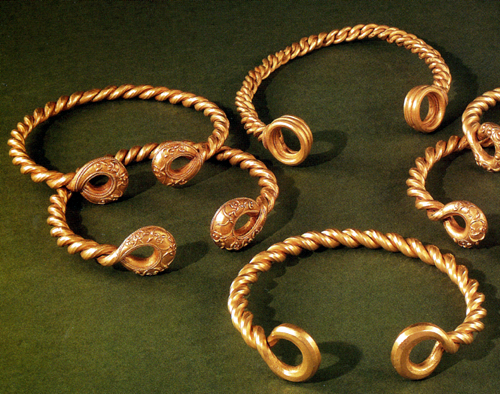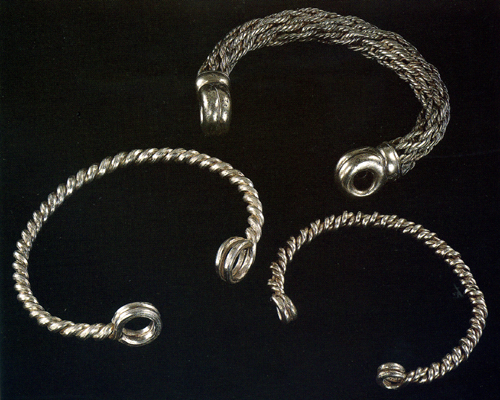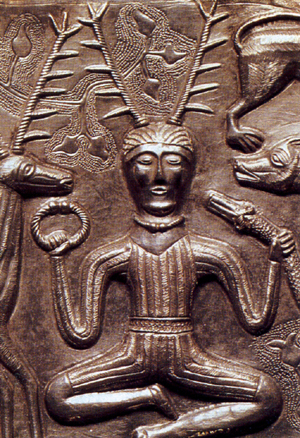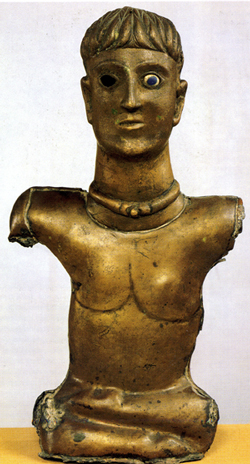|
Torcs Torcs (or torques) were neck rings worn by Celtic men and women. They were very popular, and quite a few have been found in Britain in treasure hoards. They were probably put into graves as well, but none have been found in British Celtic graves - they were probably stolen. Torcs were made of metal, such as bronze, gold or silver. Some were tube shaped, but the most famous ones are made of twisted wires. This is where they get their name - from the Latin for 'twisted'. A wire was shaped (sometimes with faceted sides, as you can see in some of the photos on this page). It was bent in half, and the strands twisted together. Extra parts on the ends were often added on too, and these could be very detailed, as you see in the Great Torque from Snettisham. One field in Snettisham (in Norfolk) has been called the 'Gold Field', for a huge amount of Celtic treasure has been found there. There were at least 12 hoards, and 75 complete torcs as well as fragments of another 100. In all the treasure contains 20kg of silver and 15kg of gold - this is more than one person would have owned and must be the wealth of a community. The torques were buried around 50BC, roughly the time when Julius Caesar visited Britain. Look at the photos of torcs on this page to see the various types. You will also see pictures of Celtic and Roman art showing men wearing torcs. |
 The Great Torque, from Snettisham, Norfolk. Made of eight 'ropes' twisted together, each 'rope' has eight strands of gold |
|
Silver torc from Needwood Forest in Staffordshire, with a complex twisting pattern |
Silver torcs |
|
Celtic God Cernunnos, holding and wearing torcs |
 Gold torques from Ipswich (with faceted wires)
|
|
Bronze Celtic statue of a man, wearing a torc
|
Roman carving showing battle between Romans and Celts - the Celtic warriors are wearing torcs |
 Torcs in the Ashmolean Museum, Oxford |
 Two more torcs in the Ashmolean Museum, Oxford |




